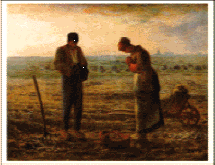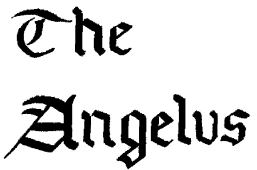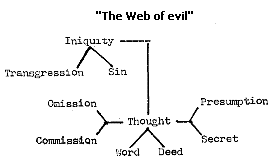


Featured Articles
Harry Emerson Fosdick was born near the city of Buffalo, New York on May 24, 1878. Though in early life he felt fearful of the torments of Hell, he nevertheless rebelled against Christian standards towards worldliness and became the most popular liberal in American theology.
As a young man he attended Colgate College where he learned to accept the theory of Evolution and where he came to doubt the reliability of the Bible. Afterwards, he entered Colgate-Roches-Divinity School where he was powerfully influenced by William Newton Clarke, the leading liberal scholar of his day. Here he learned to dismiss most Hebrew History as so much folklore. He became sour toward the doctrine of the Trinity, and found the doctrine of the Virgin Birth of Christ to be repugnant. Yet in the next fifty years, he received no less than seventeen honorary degrees!
In 1903 he was ordained a Baptist but soon became the pastor of a Presbyterian Church. Finding people are not much interested in what the Bible says, he ceased expository preaching and embraced the Social Gospel. He impugned the Inerrancy of the Bible, and opposed the literal interpretation of Scripture. He rejected the Second Coming of Christ and stated, "I do not believe in the Virgin Birth or in that old fashioned doctrine of the Atonement, and I do not know of any intelligent person who does." On another occasion he wrote, "The Substitutionary Atonement where one suffers in the place of others ...is in the view of modern ideas of Justice an immoral outrage. "
Mr. Clarence Macartney of Philadelphia, moderator of the Presbyterian Church affirmed that Mr. Fosdick denied the very basic foundational truths of Presbyterianism while pastoring a Presbyterian
Church. As a result, Mr. Macartney’s presbytery in Philadelphia requested the New York Presbyters end the General Assembly to correct the situation. The presbytery, however, refused to admit any error in Mr. Fosdick’s actions.
Historically, Presbyterianism has stressed five cardinal doctrines: the Miracles recorded in Scripture, the Virgin Birth of Christ, the Inerrancy of the Bible, the Substitutionary Death of Christ, and the Bodily Resurrection of the Lord. Mr. Fosdick denied the "Famous Five" while occupying a Presbyterian pulpit, yet his presbytery and congregation lacked the character to do anything about it. In fact, the church stood behind its "Shepherd." Is it "Christian" for a church to rally behind a man who denies everything that is "Christian" in doctrine?
In October 1924, Mr. Fosdick resigned from the First Presbyterian Church effective on May 25, 1925 accusing the General Assembly of a "Closed Shop." Mr. J. Gresham Machen wrote that Mr. Fosdisk’s resignation "like all his utterance, is the expression of a thorough- going skepticism! ...He rejects all doctrine.... The truth is that two mutually exclusive religions are struggling for the control of the Presbyterian Church ...one is Christianity ...the other is the naturalistic or agnostic modernism which is represented by Dr. Fosdick and hundreds of ministers in the Presbyterian Church. The separation of the two is demanded not only by the interests of the Christian faith but by simple honesty."
From 1925 to 1930, Mr. Fosdick served the Park Avenue Baptist Church, a Northern Baptist Church, and the church where Mr. John D. Rockefeller attended. Mr. Rockefeller declared he would support the call to Mr. Fosdick if Mr. Fosdick would agree to drop baptism by immersion as a requirement for membership. No wonder Mr. John Straton, pastor of Calvary Baptist Church in New York City referred to Mr. Fosdick as a "Baptist Bootlegger ...a Presbyterian outlaw ...the Jesse James of the theological world."
In 1933, Mr. J. Gresham Machen presented the Presbytery of New Brunswick evidence of Modernism within the Presbyterian Board. He disclosed that Unitarian literature had been recommended and used in the Riverside Church in New York where Mr. Fosdick was presently serving as pastor. Even though the material denied the Deity of Christ, the Presbyterian Board had nevertheless approved it.
He spoke of the cooperation of the Board with the National Council of India which had published a pamphlet denying the Inerrancy of the Gospel, and then referred to the Formosa Christian College in India which had twenty-nine non-Christians on its faculty and only thirteen Christians.
Mr. Machen, Mr. Charles Woodbridge and Mr. Carl McIntyre resolved on
forming an Independent Board. Leaders in the Presbyterian Church were
furious --not on account of their doctrine, for their refusal to
dissolve their new Board. Approximately one hundred ministers followed
Machen. As a result, the three were charged with "Heresy," and their
ordinations revoked, but not before they had begun the "Presbyterian
Church of
 America"
which was formally organized on June 11, 1936. Since the Presbyterian
Church United States used the name, an injunction was brought against
them. In 1938 the name was changed to "Orthodox Presbyterian Church" and
emphasized the Infallibility and Inerrancy of the Bible, believing the
books of the Bible to have been written by men "so guided by Him that
their original manuscripts were without error in fact or doctrine." It
maintained the doctrines of Original Sin, the Virgin Birth and Deity of
Christ, His Substitutionary Atonement, His Resurrection and Ascension;
His role as Judge at the end of the world, the Consummation of the
Kingdom; the Sovereignty of God, and Salvation through the Sacrifice and
Dower of Christ for those "whom the Father purposes to save."
America"
which was formally organized on June 11, 1936. Since the Presbyterian
Church United States used the name, an injunction was brought against
them. In 1938 the name was changed to "Orthodox Presbyterian Church" and
emphasized the Infallibility and Inerrancy of the Bible, believing the
books of the Bible to have been written by men "so guided by Him that
their original manuscripts were without error in fact or doctrine." It
maintained the doctrines of Original Sin, the Virgin Birth and Deity of
Christ, His Substitutionary Atonement, His Resurrection and Ascension;
His role as Judge at the end of the world, the Consummation of the
Kingdom; the Sovereignty of God, and Salvation through the Sacrifice and
Dower of Christ for those "whom the Father purposes to save."
In 1938, the controversy still loomed, and Mr. McIntyre formed the American Council of Christian Churches and the International Council of Christian Churches and withdrew from the Orthodox
Presbyterian Church to organize the "Bible Presbyterian Church." The word "Bible" was used to emphasize its opposition to the "Social Gospel" and its refusal to fellowship with "that which compromises and represents unbelief" in such doctrines as the Verbal and Infallible Inspiration of the Scriptures, the Virgin Birth, the Atonement of the Blood of Christ, and the Bodily Resurrection of Christ.
The American Council of Christian Churches and the International Council of Christian Churches and the International Council of Christian Churches continue to oppose the ecumenical policies and the liberalism of the ungodly National Council of Churches and the World Council of Churches respectively.
Wherever the Romans settled, they built an amphitheatre. Nothing gave the Romans greater sport than the tearing of limbs, the groans of agony and the sight of gore. Their ecstasy was captured whether the carnage was accomplished by wild beasts or by the combats of gladiators.
The amphitheatres at Nismes and Arles in France are the largest. The latter is so extensive the Moors built four castles on the outer wall for defense against the Franks. But the greatest of all, is the Coliseum at Rome. It accommodated 87,000 spectators and, ironically, was designed by Gaudentius, a Christian architect and martyr. Titus brought thousands of Jews from Jerusalem to build it, and at its dedication, he slaughtered 5000 animals.
Rome proclaimed days of such sport as "holidays", and people of all ages and ranks assembled, including the Vestal virgins. The Emperor himself presided over such events. The animals led the procession followed by the gladiators who marched before the Emperor. The "sport" continued all day until night fell.
In 306 Constantine entertained his subjects with what he called "Frankish sports" by exposing several thousand unarmed Franks to wild beasts. When the animals were glutted with blood, he commanded the survivors to fight each other as gladiators. Instead, the Franks voluntarily fell upon each other’s sword. In the same year, thousands of Bructeii were sacrificed for the amusements of the people.
About the year 400, an old hermit single-handedly attempted to end the games when he leaped over the wall and throwing himself between the gladiators pleaded with them to desist. Thrust aside he made another attempt only to be cut down at the cry of the spectators. But the people were shocked: they had murdered an old man because he was more righteous than they. From that day, there were no more such contests, and in 402 Honorius abolished gladiatorial combats.